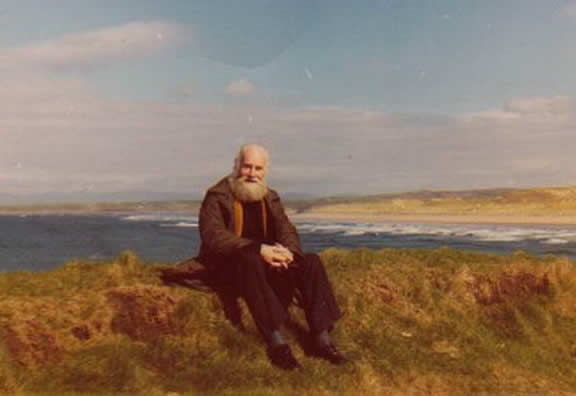
|
|
The Treacherous Beauty of Tullan Strand
Tullan Strand is the backdrop to this photograph of a bearded patriarch seated on the cliffs above it. Thanks to the heroism of a surfer who came to their rescue, seven children were rescued from drowning at Tullan Strand, near the seaside resort of Bundoran in County Donegal, on Wednesday July 24. The children were on a one-day outing by bus from Cavan, and were tempted to play in the shallow waves which looked so enticing and harmless. Suddenly all seven were floundering. A surfer nearby noticed their plight, and raced to drag them to safety. When the alarm was raised, an Air Corps helicopter was dispatched, a lifeboat was launched from Bundoran, and local Gardai rushed to the scene. By the time they arrived, the exhausted surfer had saved all seven children. The incident revived memories of the dangers for non-swimmers of bathing at Tullan Strand, dangers as real today as they were sixty years ago, as told in this extract from "The Kindly Spot" on this web site. From Tullan Strand there opened up the whole of Donegal Bay, the Leitrim Mountains on one side, Slieve League and the Rosses on the other, the broad Atlantic ceaselessly in motion in between. The strand itself, all two or more miles, was usually deserted. Behind it lay little friendly sandhills that it was fun to race up and jump down from their tops so that your legs sank into soft, sun-warmed sand, up to your knees and hips…… In recent times Tullan has become a mecca for surfers who are drawn to it from all over Europe. Its beguiling charm, however, remains treacherous for children and non-swimmers. Home | About | Canadian Vindicator | Literature | Gallery | History
|
||||||||||||||||||||||||||||||||||||||||||||||||||||||||||||||||||||||||||||||||||||
